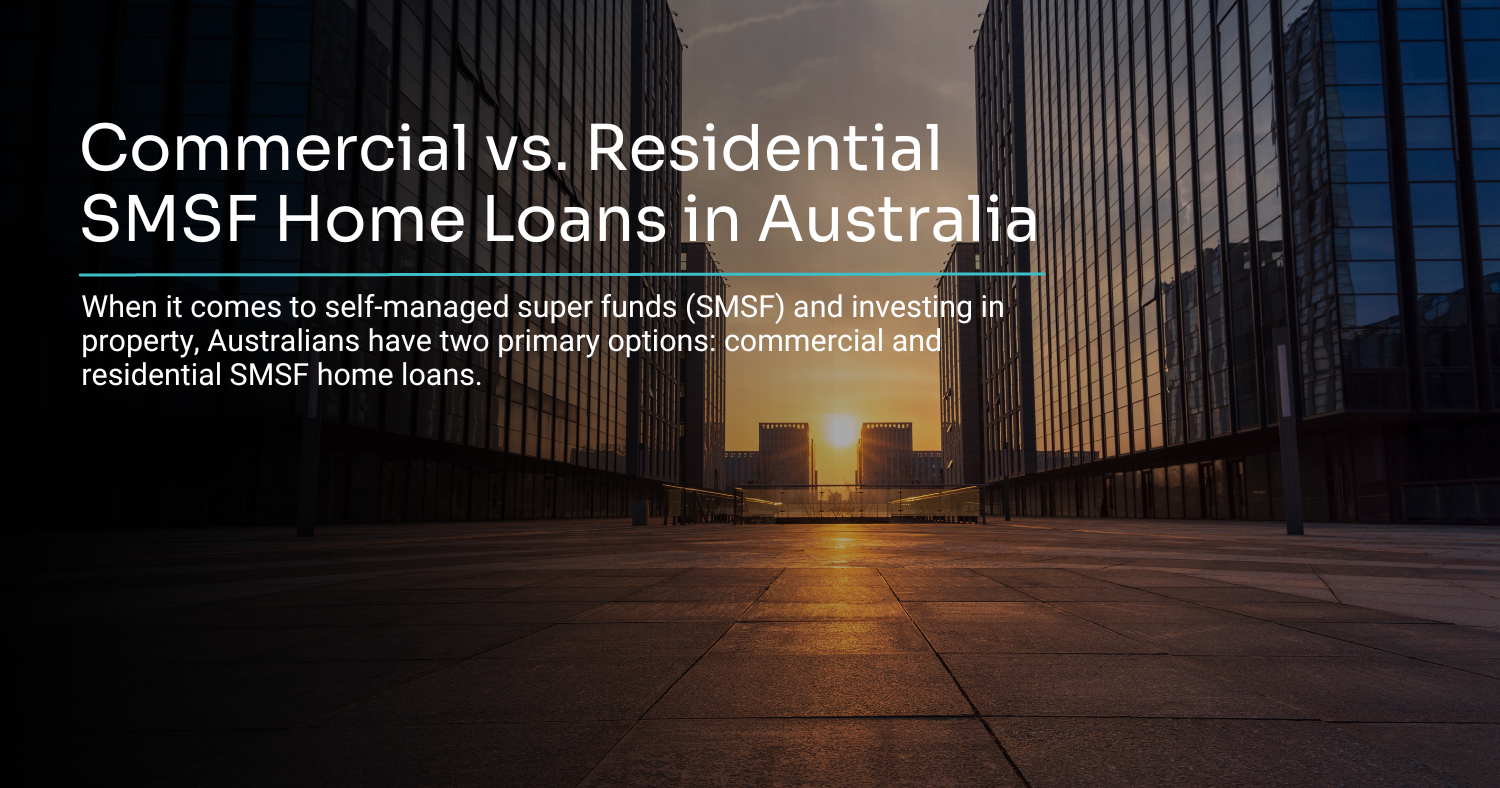
When it comes to self-managed super funds (SMSF) and investing in property, Australians have two primary options: commercial and residential SMSF home loans. Both options offer unique benefits and challenges, and choosing the right one can significantly impact the overall success of your investment. As a leading Home Loan lender in Australia with over 26 years of experience, emoney Home Loans is here to guide you through the decision-making process. In this blog, we’ll explore the pros and cons of commercial and residential SMSF home loans, helping you make an informed choice that aligns with your investment goals.
Understanding Commercial SMSF Home Loans
Commercial SMSF home loans are designed for those looking to invest in commercial properties such as office spaces, warehouses, retail shops, or industrial units through their self-managed super funds. These properties are typically intended for business use and can generate rental income or capital growth over time.
Pros of Commercial SMSF Home Loans:
a. Higher Rental Yields: Commercial properties often offer higher rental yields compared to residential properties. This means the potential for greater returns on your investment, increasing your SMSF’s growth.
b. Longer Leases: Commercial leases are usually more extended than residential leases, providing more stable and predictable cash flow for your SMSF.
c. Diversification: Investing in commercial properties allows for diversification within your SMSF portfolio, reducing risk and exposure to a single asset class.
d. Tax Benefits: Commercial SMSF home loans offer various tax benefits, including deductions for interest, depreciation, and other property-related expenses.
Cons of Commercial SMSF Home Loans:
a. Higher Entry Costs: Commercial properties generally come with higher upfront costs, including a larger deposit and stamp duty fees, making it less accessible for some investors.
b. Market Volatility: The commercial property market can be more sensitive to economic fluctuations, which may impact rental demand and property values.
c. Specialist Knowledge: Successfully managing commercial properties requires a deeper understanding of the commercial market, leasing agreements, and tenant management.
Exploring Residential SMSF Home Loans
Residential SMSF home loans are geared towards investing in residential properties, such as houses, apartments, or townhouses, using your self-managed super fund. These properties are often intended for residential use, offering the potential for rental income and capital appreciation.
Pros of Residential SMSF Home Loans:
a. Lower Entry Costs: Residential properties generally have lower entry costs compared to commercial properties, making it more accessible for first-time investors or those with limited funds.
b. Stable Demand: Residential properties tend to experience more stable demand, as people will always need a place to live, even during economic downturns.
c. Familiarity: Many investors are more familiar with the residential property market, making it easier to research and find suitable investment opportunities.
d. Potential for Capital Growth: Residential properties located in high-growth areas have the potential to experience significant capital appreciation over time.
Cons of Residential SMSF Home Loans:
a. Lower Rental Yields: Residential properties often have lower rental yields compared to commercial properties, potentially impacting the overall income generated by your SMSF.
b. Market Saturation: Some areas might experience an oversupply of residential properties, leading to increased competition and potentially lower rental returns.
c. Limited Diversification: Investing solely in residential properties might limit the diversification of your SMSF portfolio, potentially increasing risk.
Conclusion
Choosing between a commercial and residential SMSF home loan is a crucial decision that can significantly impact the success of your investment. Commercial properties offer higher rental yields and longer leases, making them a viable option for investors seeking higher returns and diversification. However, they also come with higher entry costs and greater market volatility. On the other hand, residential properties offer lower entry costs, stable demand, and potential capital growth. Yet, they may have lower rental yields and limited diversification.
At emoney Home Loans, we understand the complexities of the Australian property market and offer tailored solutions for both commercial and residential SMSF home loans. With over 26 years of experience and strong partnerships with the most powerful banks and lenders, we are committed to helping you make the right choice that aligns with your investment goals.
Whether you’re an experienced investor or a first-time buyer, our team of experts can guide you through the process, ensuring a seamless experience from application to settlement. Contact emoney Home Loans today and take the first step towards securing a prosperous future for your SMSF investment.
Disclaimer: Please note that the information provided in this article is for informational purposes only and should not be considered as financial advice. Every individual’s financial circumstances are unique, and it’s crucial to seek personalised advice from professionals before making any investment decisions.

First Home Buyer's Guide
Enter your email address for instant access to our handy First Home Buyer's ebook.

Construction Loan Guide
Building a new home. Find out about the construction loan process.

